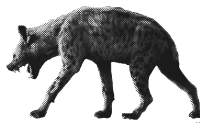Bastianelli, M.L. et al. (2021) Survival and cause-specific mortality of European wildcats (Felis silvestris) across Europe. Biological Conservation 261, 109239.
Brito, J. C. et al. (2018) Armed conflicts and wildlife decline: Challenges and recommendations for effective conservation policy in the Sahara-Sahel. Conservation Letters2018, e12446.
Carrete, M. et al. (2022) Emerging laws must not protect stray cats and their impacts. Conservation Science and Practice 1-3, e12706.
Casas, F. et al. (2016) Changes in behaviour and faecal glucocorticoid levels in response to increased human activities during weekends in the pin-tailed sandgrouse. The Science of Nature 103, 91.
Casas, F. et al. (2019) Opposing population trajectories in two Bustard species: A long-term study in a protected area in Central Spain. Bird Conservation International 29, 308-320.
Casas, F. et al. (2020) Are trellis vineyards avoided? Examining how vineyard types affect the distribution of great bustards. Agriculture, Ecosystems & Environment 289, 106734.
Durá-Alemañ, C.J. et al. (2023) Climate change and energy crisis drive an unprecedented EU environmental law regression. Conservation Letters.
Durant, S.M. et al. (2019) Stop military conflicts from trashing environment. Nature571, 478.
Gil-Sánchez, J.M. et al. (2004) A nine-year study of successful breeding in a Bonelli´s eagle population in southeast Spain: a basis for conservation. Biological Conservation 118, 685-694.
Hernández-Matías, A. et al. (2014) From local monitoring to a broad-scale viability assessment: a case study for the endangered Bonelli’s eagle Aquila fasciata in Western Europe. Ecological Monographs 83, 239-261.
Jowers, M.J. et al. (2019) Genetic diversity in natural range remnants of the critically endangered hirola antelope. Zoological Journal of the Linnean Society 190, 384-395.
Moleón, M. & Sánchez-Zapata, J.A. (2023). Extending the dynamic landscape of fear in a human-dominated world. Trends in Ecology & Evolution 38, 215-216.
Pérez-García, J.M. et al. (2022) Priority areas for conservation alone are not a good proxy for predicting the impact of renewable energy expansion. Proceedings of the National Academy of Sciences, USA 119, e2204505119.
Rosso, A. et al. (2018) Effectiveness of Natura 2000 network in protecting Iberian endemic fauna. Animal Conservation21, 262-271.
Sebastián-González, E. et al. (2018) Using network analysis to identify indicator species and reduce collision fatalities at wind farms. BiologicalConservation 224, 209-212.
Simón, M.A. et al. (2012) Reverse of the decline of the endangered Iberian lynx. Conservation Biology 26, 731-736.











